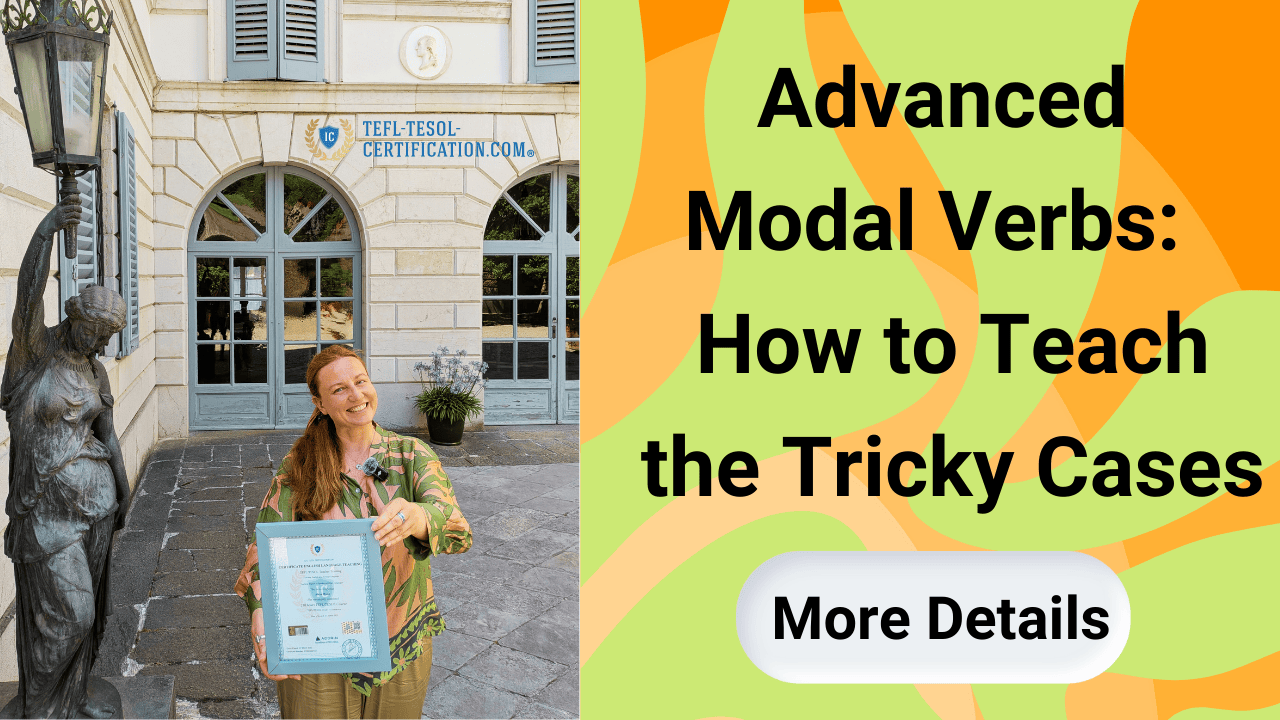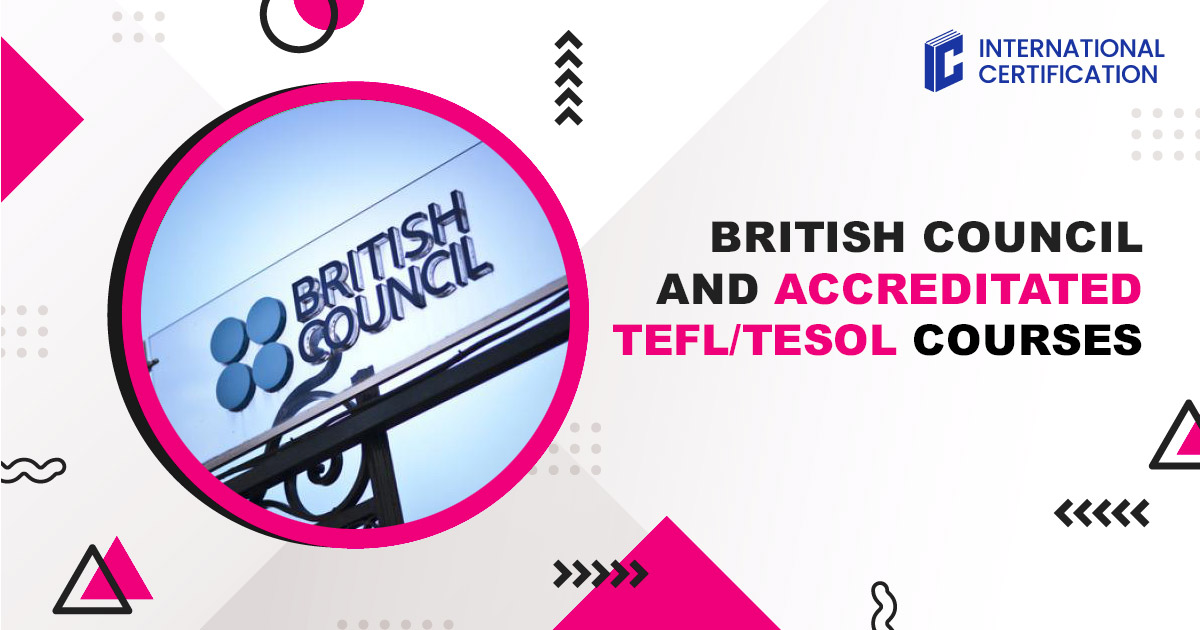Modal verbs in English often puzzle even seasoned users, because different forms can carry similar meanings but a different degree of force. For example: “I must finish this chapter” signals an inner obligation or decision, while “I have to finish this report by 6” points to an external requirement or rule. Another common contrast appears with advice: “You should see a doctor” is a gentle recommendation, whereas “You ought to see a doctor” sounds more formal and more insistent. In this article, you’ll see how to use quick contrasts and clear “choice rules” to explain these differences so students avoid confusion from the very first lesson devoted to advanced modal verbs in formal and informal English.
Advanced Modals: A New Level of Understanding and Teaching
When we start teaching English, it can feel like we “know everything” about modal verbs. Can, must, may—straightforward Intermediate topics, right? Then we take on higher-level groups and realise that advanced modal verbs challenge not only students, but teachers too. Why? At the Advanced level, new meanings, contexts, and usage nuances appear—points that most core coursebooks mention only in passing.
🎯 Key idea: tricky modal-verb cases aren’t a methodological whim—they reflect how English actually works. Formal English (business emails, academic texts) and conversational English diverge, and modal constructions showcase that difference vividly. As teachers, we need to be confident in these nuances before we teach them to others.
Common Advanced-level questions include: why do we use may in formal writing but can in dialogue? What’s the difference between may/might, and why are can/could so typical in spoken English? It’s crucial to explain this and other shades of meaning clearly to keep confusion at bay. Below are the most frequent “pitfalls” of advanced modal grammar.
- Formal vs informal register: selecting modals to match the situation (e.g., may or can).
- Politeness and distancing: using could, would to soften requests.
- Past-time modals: patterns like could have done, should have done and what they mean.
- Subtle meanings: differences between near-synonymous expressions (e.g., needn’t have vs didn’t need to).
- Broader inventory: less obvious items—shall, ought to, dare—and when they are natural.
We’ll unpack each point in detail—and, more importantly, discuss how to make these nuances teachable, so learners feel curious and confident rather than overwhelmed. 💡 Our goal isn’t just to “know the rules,” but to inspire students to appreciate the elegance of English—even in the thickets of grammar.
🎓 Get a TEFL & TESOL course and certificate with a 50% discount!
And start earning money 💸 by teaching English in your own country, abroad, or online from anywhere on the planet! 🎁 Gifts and bonuses: professional support from your personal coach 🧑🏫 and job placement assistant 💼.
Formal Modals vs Everyday Speech: Feel the Difference
Let’s begin with the most visible contrast: formal vs informal style. In formal contexts—business correspondence, academic writing, presentations—speakers tend to prefer stricter, more formal modal verbs. In friendly conversations or casual settings, language softens and simplifies. A classic example is the pair may vs can.
Beyond register, there’s a semantic difference too: may primarily signals permission, while can primarily signals ability/practical capability (skill, possibility in practice).
💡 Teacher tip: train students to read the context. Situation and audience drive word choice. In an email to a colleague, May I request further information? fits the tone; in conversation with a friend, Can I get more info? sounds natural. One word changes, but the tone changes dramatically.
Consider a typical situation: a learner wants to ask permission or make a request—what are the options and how do native speakers perceive them?
-
Can I …? — an informal request, fine in casual talk (e.g., Can I borrow your pen?).
-
Could you …? — a polite request; could softens the tone (e.g., Could you please open the window?).
-
May I …? — formal style, a clear permission request (e.g., May I come in?).
-
Would you mind …? — very polite and soft (e.g., Would you mind helping me with this report?).
When it’s not about permission but about ability/skill, use can/could:
She can swim. / When he was younger, he could run 10 km without stopping.
🚀 Get a free 12-step checklist for increasing your income as an English teacher!
💡 Unlock the secrets to doubling your teaching income with our exclusive checklist! 🎯 This checklist is designed for English teachers who want to 📈 attract more students and 🔥 keep them engaged for the long term.
You can hear the difference in tone clearly: “Give me a hand” is direct, while “Would you mind giving me a hand?” is tactful and courteous. Choice of modal or construction creates the effect. In class, short role-plays highlight this brilliantly: waiter & customer, manager & team member, old friends in a kitchen—each asks for a glass of water using different requests. 😊 That simple activity makes “why this form matters” instantly visible.
Permissions and prohibitions add another layer. In casual speech we naturally say: You can’t park here. In formal writing you’ll more likely see: Parking is not allowed or even You may not park here (the latter is stricter and more official). Negative may sets an official tone of prohibition, while can’t is a versatile, conversational choice. To build intuition, compare noticeboard language: on a private fence you’ll see “No Entry. Trespassers will be prosecuted” rather than “You can’t come in.” Students immediately grasp the different registers.
Shall vs will is another register point. In modern English, shall feels formal or bookish. You almost never hear it in American casual speech, but it’s alive in legal/official prose: The tenant shall pay the rent on the first day of each month. Learners often ask why we need shall at all if will exists—the answer is stylistic colouring. And it’s a joy when students recognise lines like “I shall return” or “Shall we dance?” in older films or literature; they start to hear era and tone!
🎯 In Business English—meetings, email—prefer more formal constructions. For example, Could you …? instead of a blunt Can you …?, or May I …? instead of Can I …?. Many trainers note that may and might are preferred in professional communication, while plain can is fine among friends. Politeness drives better outcomes: switching from Can you send me the report? to Could you send me the report, please? often changes the temperature of the whole thread.
In English, must and have to are often both translated as “must/should,” yet they convey different kinds of obligation: must is an internal necessity or the speaker’s stance; have to is an external requirement—rules, deadlines, circumstances.
Core idea
-
must — obligation/necessity from within: speaker’s decision, strong recommendation.
-
have to — external requirement: rule, law, schedule, someone else’s instruction.
Examples
-
I must call my grandmother tonight. — inner decision/personal resolve.
-
We must stay focused on the main goal. — internal necessity, speaker’s stance.
-
I have to wear a uniform at work. — external requirement/rule.
-
She has to submit her visa application by Monday. — deadline imposed from outside.
Prohibition vs no necessity
Important: mustn’t ≠ don’t have to.
Questions
Past/Future
Logical deduction (another value of must)
Mini-contrasts
-
Rule/law: Cyclists have to wear helmets here. — obligation from an external rule.
-
Personal resolve: I must stop procrastinating. — internal decision.
-
Sign/notice (strict tone): Visitors must show ID. — strong, non-negotiable instruction.
One-line summary: must = “I insist / I believe it’s necessary”; have to = “circumstances/rules require it.”
🎁 Get your free exclusive guide: 📘 "112 Best Platforms for Earning with Online English Teaching" ✨
🚀 More students, 💰 higher income, 🌍 complete freedom! ✅ 112 verified platforms with top rates ⏳ Flexible schedule – work whenever and as much as you want 🎯 Simple requirements – start earning right away 💎 Boost your career and income by teaching students worldwide!
Using could, may, might at the Advanced Level
It’s worth focusing on the trio could, may, might. Learners often ask: what’s the difference? All three can translate as “may/might” or “could,” but the key is the confidence scale and register differences:
- May — probability with a neutral or formal colouring. For example: She may join us later (it’s quite possible). In academic writing, may is common and sounds objective.
- Might — probability with a shade of doubt, frequent in spoken English. She might join us … sounds like thinking aloud. In British speech, might often softens tone where may would also be possible. Historically, might could describe habitual past in literary style: Years ago, kids might be sent to work at age 12.
- Could — beyond “could do,” it implies possibility under certain conditions. In questions, it works as a polite hypothesis: Could it be that you don’t want to attend the meeting? Also remember could is the past of can, so it can point clearly to the past—another place learners get tangled.
Additionally: ought (to) and dare
Ought (to) expresses moral obligation or a strong piece of advice, more formal and insistent than should, but softer than must.
You ought to back up your files regularly.
Negative: oughtn’t (to): You oughtn’t to say that.
Question (rare/formal): Ought I to call her now?
With perfect infinitive—regret/reproach: You ought to have told me earlier.
What confuses students: forgetting the particle to; using don’t ought to instead of oughtn’t (to); and not feeling the stronger insistence of ought to compared to should.
Dare (“to dare”) appears as a semi-modal and as a lexical verb.
• Semi-modal dare (esp. BrE) takes no to and no do-support, typically in questions/negatives:
Dare I say this? / He daren’t tell her the truth.
• Lexical dare uses auxiliaries and to:
She didn’t dare to ask. / He doesn’t dare to disagree.
Fixed exclamation: How dare you…!
Typical pitfalls: mixing the two patterns (He doesn’t dare tell vs He daren’t tell), omitting to where it’s required, or adding to after the semi-modal form.
💡 Teacher hack: let students “feel” the contrast—have them substitute may/might/could into the same sentence and discuss how meaning shifts. For example: “He may come to the party” vs “He might come to the party” vs “He could come to the party”. Who sounds more confident (may often reads as more confident than might)? Where is there an implied condition/ability (could)? Short group analysis builds a real feel for nuance.
🎉 Get your free practical book: 📖 “20 Ready-Made EFL & ESL Lesson Plans for English Teachers”.
💼 Less preparation - more engagement and results in lessons. 🔹 20 topics: family, hobbies, travel, debates and much more 🔹 For beginners and experienced teachers 🔹 Fully ready-made lessons - open and conduct lessons easily! 🔥 Save time and make lessons interesting and effective
📚 Download lesson plans
Perfect-Infinitive Modals: Talking About the Past and Missed Chances
Now to a favourite of exam writers (and advanced coursebooks): the pattern modal verb + have + V3, i.e., perfect-infinitive modals. This grammar lets us talk about the past from the present—expressing deduction, regret, or criticism after the fact. Let’s break it down.
Imagine you arrive in class; a student is missing and late. What are your hypotheses? Enter may have, might have, must have, can’t have and friends. Each encodes a degree of certainty:
- He must have forgotten about the lesson. — near certainty; the most logical explanation.
- He may have gotten stuck in traffic. — a 50/50 neutral possibility.
- He might have overslept. — a weaker, more conversational speculation.
- He can’t have forgotten our lesson. — strong negative deduction; we’re sure that didn’t happen.
When first presenting this, comparing perfect modals to detective work 🔍 helps: we gather “evidence” and test theories about what might have happened. Ask students to invent scenarios—why the boss was late, how a character lost money—using must have / might have / can’t have. The activity is fun and the forms stick.
Another side of perfect modals: regrets and reproaches—classic “the train has left” territory. Here we meet should have, ought to have, could have with special meanings:
- Should have / Ought to have + V3 expresses reproach or regret: something should have been done, but wasn’t. You should have told me the truth.
- Could have + V3 often signals a missed opportunity: the person could have done it, but didn’t. You could have helped me instead of just watching.
- Might have + V3 can work similarly, but even softer: You might have called to say you’d be late.
And the perennial Advanced question: what’s the difference between didn’t need to do and needn’t have done? The classic explanation:
- didn’t need to do — there was no need, and (by context) the person didn’t do it. I didn’t need to bring an umbrella (so I didn’t).
- needn’t have done — there was no need, but the person did it anyway. I needn’t have brought an umbrella (but I did).
🎯 Takeaway: perfect-infinitive modals let us evaluate the past from the present—part modality, part time. Once learners grasp that blend, you’re halfway there. After that it’s practice: case studies, real-life scenarios, and lots of short, focused production.
How to Teach These Nuances: Experience, Errors, and Wins
- Don’t overload at once. Introduce complexity in context and in stages. For example, teach needn’t have after learners are comfortable with past tenses and the must/have to contrast.
- Use real examples. Stories—authentic or classroom-adapted—make grammar memorable. Even mini-vignettes tied to students’ experiences work wonders.
- Role-plays and cases. Mini-detective tasks for must have / can’t have, mock “court” scenes to practise should have + responses, workplace scenarios for register shifts.
- Invite questions. Build safety for “I’m not sure.” Collaborative analysis increases trust and deepens understanding.
- Keep learning. Articles, videos, teacher communities—there’s a wealth of shared practice in the TEFL/TESOL world. Borrow ideas and keep refining your craft.
On qualifications: a structured TEFL/TESOL course pays off with topics like these. With the 120-hour online TEFL/TESOL course you’ll solidify grammar knowledge, polish classroom technique, and learn how to turn a “dry” point into an engaging lesson. Certification boosts confidence where it matters most—at the board.
Another plus: mobility and opportunity. With a TEFL certificate you can teach almost anywhere—France, Vietnam, or online from a café. See the website for how an international certificate opens doors worldwide and helps you chart a flexible career path.
Conclusion: Stay Inspired and Keep Growing
Advanced modal constructions aren’t monsters; they’re one of the most interesting parts of English. Yes, they demand attention and patience—but it’s exactly in those nuances that we keep learning too. Every student question is a chance to dig deeper and sharpen our craft. 🤗 English is endless—that’s a feature, not a bug. For teachers, it means there’s always room to grow.
Hopefully this guide gave you a new angle or a helpful reminder or two. Keep sharing knowledge with warmth and enthusiasm—students feel it and catch the spark. Grammar is just a tool; in skilled hands (yours 😊) even the “scariest” modal becomes a springboard for a lively discussion or a good laugh in class.
Wishing you inspiration and steady professional growth! If you’re just starting your English-teaching journey, go for it—it’s a creative, rewarding profession. To all colleagues: may your lessons be rich and your students’ progress visible. We’ll tame the grammar thickets—and teach our learners to enjoy the walk.





